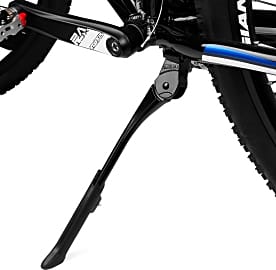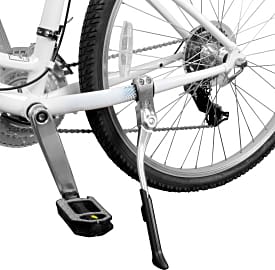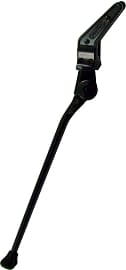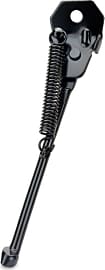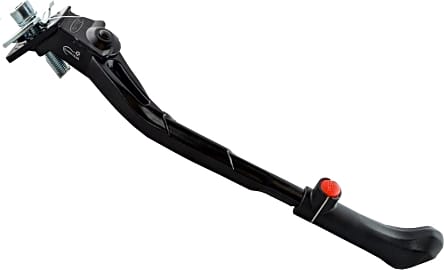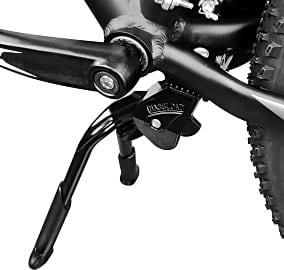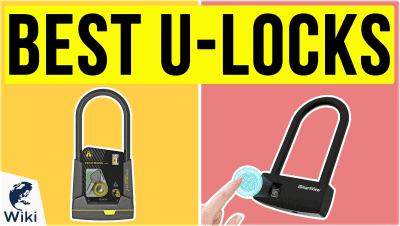The 10 Best Bicycle Kickstands

This wiki has been updated 35 times since it was first published in May of 2016. If your preferred mode of transport is a self-powered, two-wheeled vehicle, then you may occasionally have trouble finding somewhere to park your ride safely. These bicycle kickstands give you the ability to prop up your bike just about anywhere, which helps prevent damage, and are available as replacements for a broken stand or as a new installation on bikes that come without one. When users buy our independently chosen editorial picks, we may earn commissions to help fund the Wiki.
Editor's Notes
October 14, 2020:
This time around we only made a few slight changes to our list since almost every entry is still readily available, and none of them have become obsolete due to any sort of major change in bike technology. Firstly, we replaced the Toptrek 24"-29" with the Topcabin Adjustable for no other reason than the former was experiencing availability issues. These selections are essentially identical, though the Topcabin Adjustable does have the added benefit of being available in white, or as a center-mounting model.
We also added the Bell Sports Bracer 100 in order to provide a bit more variety for those looking to add a kickstand to a smaller bike, whether it be an adult BMX model or a child's bicycle. As an added benefit it is also one of the lowest priced models on the market, though it is still decently rugged and functional.
After you've chosen a kickstand feel free to check out our other articles on bike accessories like U-locks, bottle cages, and taillights
August 22, 2019:
A good kickstand is a great way to keep your bicycle free from scratches, dents, and dings that accumulate if you lay it down on the ground when you're not riding. A kickstand might even prevent your bike from being run over if it's parked behind a vehicle because the driver can see it more easily. This is especially true for kids' bikes, which are quite likely to be lying in the driveway behind your car if they don't have kickstands.
Our selections are made of sturdy materials like aluminum or powder-coated steel for durability, and you can either find the one that's sized just right for your bike or, on some models, you can adjust the length by cutting it to size or with a built-in spring mechanism. We included a variety of options, including some that mount on a center plate and some on the chainstay. The chainstay-mount models include protective coating so they won't scratch the bike's paint.
We like the BV KA76 and gave it one of our top slots because it features a concealed spring-loaded latch for easy length adjustments so that you can park on uneven ground whenever you need to. We also like the Pletscher Center Mount for the way it lifts your tire off the ground should you need to do some maintenance while on the road.
The Kickstand: Practicality And Support At Work
To be blunt, some have simply considered it dorky and a detraction from style.
Some people who are particular about the objects they own are almost as passionate about protecting them as they would be a member of their own family. Okay, well, that may be a bit of an exaggeration, but the point I'm trying to make is that for some, it makes little sense to buy an expensive object without an accessory to ensure its protection when you have to leave it somewhere. Imagine an avid car lover choosing to put a soft tarp over his vehicle in a parking lot in order to protect it from scratches, dents, and other damage. Think about the die-hard fashionista who obsesses over a sturdy hanger to safely store a pricey leather jacket in his closet. A bike owner shows a similar level of care and dedication to his possession by equipping it with a kickstand.
The main purpose of a kickstand is to keep a bicycle in an upright position without forcing it to lean against another object like a car, brick wall, or even another person. Most rudimentary kickstands are made from sturdy metals, like stainless steel, and are designed to flip down from the bicycle's frame to make contact with the ground, essentially giving the bicycle added support that resembles a tripod, at least in some form. Obviously, a bike isn't a three-legged object, but the simple addition of a metal extension in the middle of its frame as part of its overall anatomy can be a big help in a variety of situations.
Kickstands come in several different types, with the classic design being the single-leg or side stand. The side stand is a single piece of metal that flips outward from either side of the frame (often the left side), and on which the bike can lean when not in use. It can be mounted to the chain stays right behind the bike's bottom bracket or to a chain and seat stay near its rear hub. Single-leg stands mounted behind the bottom bracket can be bolted or welded into place in order to become part of the frame. Representing around 90 percent of the available kickstands on the market, the side stand is typically the least expensive option, sometimes equipped with an adjustable shaft length, so it doesn't have to be cut in order to accommodate different bike shapes or sizes.
The center-style kickstand is characterized by either a pair of metal legs or a bracket that flips straight down, lifting a bike's rear wheel slightly off the ground and allowing it to lean forward or backward instead of to one side. Like side stands, center kickstands can also be mounted to the chain stays (right behind the bottom bracket) or to the bike's rear dropouts. Center stands are also commonly found on motorcycles, as they distribute heavy weight loads more evenly, which means less wear and tear on the tires.
To be fair, we must also take a step back and understand that not everyone is in love with the idea of installing a kickstand on their bike. Why not? To be blunt, some have simply considered it dorky and a detraction from style. From a more functional standpoint, the benefits of a kickstand are thought to be outweighed by the costs of adding additional weight to certain bicycles used for performance purposes. However, the fact of the matter is that while the extra load is an important consideration, a performance bicycle represents a highly-specialized niche that doesn't necessarily negate the importance of a load-stabilizing kickstand in the functional sense when it comes to everyday travel, hence the average person's use of the attachment to keep their bike from falling over when parked.
An Asset Instead Of A Liability
Like a majority of products requiring research, not every kickstand will be ideal for every type of bike or situation in which you find yourself. Each type has its own set of advantages and potential drawbacks. For that reason, it's important to understand the mechanics and science behind how a bike functions. This can, at the very least, steer you in the right direction for the best choice.
Single-leg attachments can usually be pushed up or down by the rider's foot.
If, for example, you plan to equip your bike with a basket or rack for grocery shopping, then a center-style kickstand is highly desirable for its additional leverage and stability on the ground. Such a kickstand can also come in handy when running other short errands where you'll be stopping often, securing the bike to prevent theft, and then heading off to your next stop. The shorter the trip and the more you carry, the more a kickstand will come in handy and the less the extra weight will matter. The whole point of having the device installed onto your bike frame in the first place is so that it becomes easier to support the additional weight from your groceries and other supplies.
A single-leg kickstand with an adjustable-length shaft is particularly useful when parking your bike on different types of terrain. As not all ground is created equal, the stand should be versatile enough to prop the bike up and keep it safely balanced when you're not around. Some of the best kickstands are also thick enough to provide ample support for withstanding heavy winds so that it doesn't blow over.
Regardless of type, the kickstand one chooses should also be able to extend and retract easily. Single-leg attachments can usually be pushed up or down by the rider's foot. The last thing one should have to contend with is a finicky kickstand that is difficult to deploy or push back against the frame when it's no longer needed.
A Brief History Of Kickstands
While the bicycle has a history dating as far back as the early nineteenth century, Albert Berruyer fashioned the first known kickstand in 1869. Some of the earliest kickstands were mounted directly below a bicycle's handlebars, making them much longer than their modern counterparts. In 1891, Pardon W. Tillinghast patented a design for a stand that was mounted on the pedal, but was able to fold up flat under that pedal when it wasn't being used.
In 1891, Pardon W. Tillinghast patented a design for a stand that was mounted on the pedal, but was able to fold up flat under that pedal when it wasn't being used.
Eldon Henderson patented a shorter kickstand in 1926, followed by inventor Joseph Paul Treen's kickstand in the 1930's. Having been frustrated with the big motorcycle kickstands of his time, Treen developed a more convenient and compact style, which was eventually adapted to bicycles.
It wasn't until the 1970's that the anti-kickstand sentiment gained traction, more so because of the arrival of the ten-speed racing bike and people's concern with the extra weight of the kickstand compromising its lightweight frame.
Modern thinking of the kickstand pegs it as an interesting mix of usefulness in certain situations, while labeling it as an unfortunate form of obsolescence in other capacities. Regardless of what people may think about the attachment, it still maintains its sense of practicality, especially when it comes to bike safety and teaching new cyclists how to ride or take care of their equipment.



